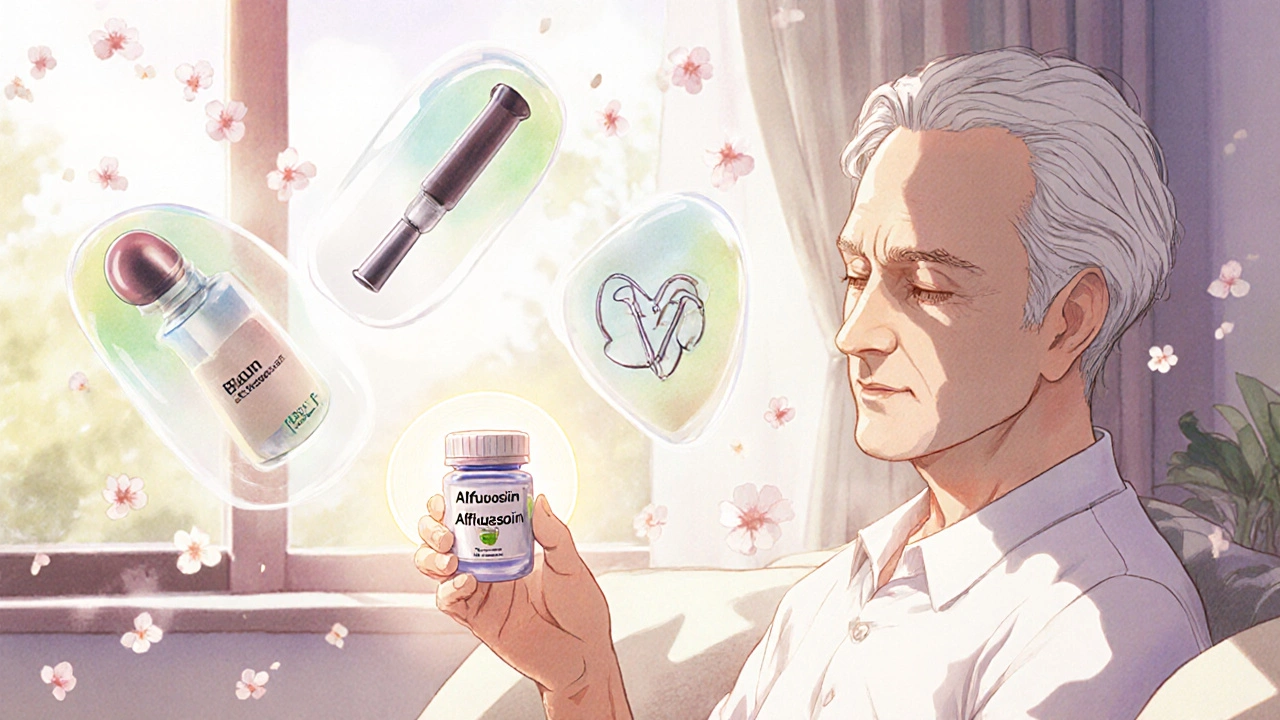Benign Prostatic Hyperplasia: Symptoms, Treatments, and What You Need to Know
When your prostate grows larger but isn’t cancerous, you’re dealing with benign prostatic hyperplasia, a non-cancerous enlargement of the prostate gland that commonly affects men over 50. Also known as BPH, it’s not life-threatening—but it can make everyday tasks like sleeping, working, or even leaving the house a hassle. About half of men in their 60s and up to 90% of men in their 80s have some degree of prostate enlargement. It’s not something you catch—it’s something you outlive.
This isn’t just about a full bladder. The real issue is the pressure the enlarged prostate puts on the urethra, which slows or blocks urine flow. You might find yourself getting up four or five times a night, straining to start peeing, or feeling like you haven’t fully emptied your bladder. These aren’t normal aging quirks—they’re signs your body’s signaling for help. And while some men ignore it, others end up in the ER with urinary retention, a medical emergency that requires immediate catheterization.
Treatment doesn’t always mean surgery. Many men manage BPH with simple lifestyle changes—cutting back on caffeine after dinner, avoiding decongestants, or timing their fluid intake. Others turn to medications like alpha-blockers (such as tamsulosin) that relax the prostate muscles, or 5-alpha reductase inhibitors (like finasteride) that shrink the gland over time. There are also newer minimally invasive procedures that don’t require a hospital stay, like UroLift or Rezum, which use heat or tiny implants to relieve pressure without cutting.
What’s missing from most online advice is the connection between BPH and other health issues. If you’re taking medications for high blood pressure, depression, or allergies, some of them can make urinary symptoms worse. And if you’re also managing diabetes or heart disease, your treatment plan needs to account for how these conditions interact. It’s not just about the prostate—it’s about your whole system.
Below, you’ll find real, practical guides written by people who’ve been there. From how to spot early warning signs to comparing the most common drugs, these posts cut through the noise. You’ll see what actually works for men in their 50s, 60s, and beyond—not theory, not ads, just facts from people who’ve lived it.
The Future of BPH Treatment: Will Alfuzosin Still Be Relevant?
Alfuzosin helps with BPH symptoms but is being replaced by newer procedures like UroLift and Rezum. Learn when it still makes sense-and what’s next for prostate health.
VIEW MORE
